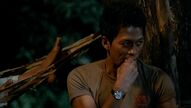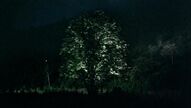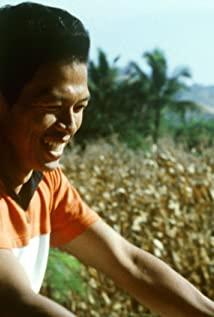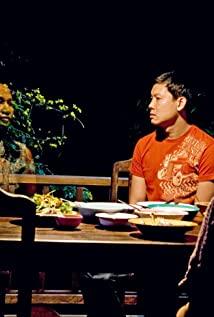The synopsis of the story I think is: keng is a soldier who lives at the country boy's house with a corpse after a mission with his companions. Keng gradually developed feelings for the country boy, and he frequently asked the boy to play in the later life, and the two often went to the pavilion to chat. One day, a woman came to the pavilion and took them to the cave. In the cave, Keng was worried that his life would be in danger and left. The love between the two gradually became firm. After that, the boy expressed his love to Keng, and Keng was very happy. Keng went to the boy's room and saw a collection of albums. He completely entered the allegorical fantasy of the album. In the fantasy, keng faced unknown dangers alone in the forest. The boy turned into a tiger spirit to accompany him. He became more and more primitive, living like a beast in control, until a tiger in the tree looked at him, and at that moment he faced the truth of his heart and the quiet forest.
1. The film as a whole is very complete. I like the director's capture. From the first shot, every face in the shot is full of energy, and the dense vegetation in the jungle adds more rhythm to the picture. The control of scenes is quite strong. After several consecutive close-up and medium shots, there will be long-range scenes, which gives the scene more rhythm and makes the connection of scenes more natural and vivid. 2. The first very touching camera movement is when the soldier walks forward slowly carrying the body, the soldier is joking with the liaison on the walkie-talkie, the voice is getting farther away, when the line "I will play a song for the lonely you" is finished. , the soldiers have long disappeared in front of the camera, the camera moved forward, and the soundtrack sounded, very rhythmic, as if the song of the love and passion of life that the soldiers longed for in the lonely heart really sounded in the jungle, the next shot is like A naked man walked into a picture-like empty mirror, probably the country boy behind. 3. The director has a strong control over a single scene, but the connection of each scene makes me jump a bit. The front and back scenes are not coherent, but each scene is too lifelike to make up for this naked jump. I love scenes of country boys playing football, surfing the Internet, going to a karaoke club, etc. Before entering the second half of the fantasy, the director used a lot of elements, such as singing, playing billiards, surfing the Internet, going to the cave, taking the dog to the hospital for treatment, etc. Moreover, many of the pictures were like photographic works, so the emotions of the pictures were detached from the film. The overall structure and content produced something that impressed me a lot was the billiard scene. At the end, a strange man was sitting by the wall alone and watching, looking very lonely. I don’t understand why this shot was put in, but it was also It belongs to this space, and it is especially like a photographic work. The atmosphere and texture are different from the previous series of shots, and there are several similar treatments. 4. The second place where the soundtrack is played is when Keng gets the love of a country boy and leaves on a motorcycle alone. The next shot of Keng riding a motorcycle is to shoot street lights from the car. The street lights move forward, and the light emitted by the street lights transitions back and forth, producing a progressive beauty of light, a kind of roadside comfort and a relief of life. The shots under the entire soundtrack are great. 5. After entering the second half of the fantasy plot, I had a bit of difficulty watching it in the middle, and the plot was pushed very slowly. It was all Keng facing the fear in the forest alone. But when the scene where the country boy is the tiger spirit appeared, the plot echoed before and after, and I had a broader understanding of keng's predicament. The scene where the ape is talking is also very emotional. Later, when I concentrated on the late-night scene, I suddenly realized the texture of Apocalypse Now, which is also a forest, and a fear of the unknown, while Apichatpong's features are more detailed. Greasy and rough, a kind of wild power, this touches me more, Apichatpong is concerned about how to face Keng. In the end, when Keng faced the tiger, it directly shocked me. The narration was his inner voice. He said, "At that moment, I saw my true appearance, my father, my mother, and my fear." The voice was particularly vivid. In short, the spectacle in the second half is quite interesting. The last scene is to shoot the branches of the forest and the sky upwards, as if Keng is looking at the sky and breathing weakly, an ethereal spirit after experiencing the ups and downs of life and despair. I love the mystery of Apichatpong's film and the beauty of each shot, it's special and inspiring to me. The world he sees is kind and inclusive, and I can also enter, absorb and breathe.
View more about Tropical Malady reviews









